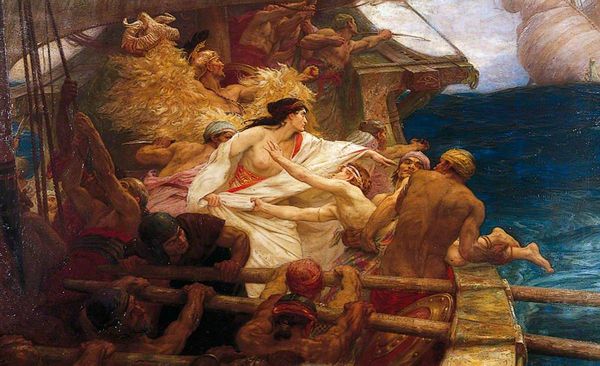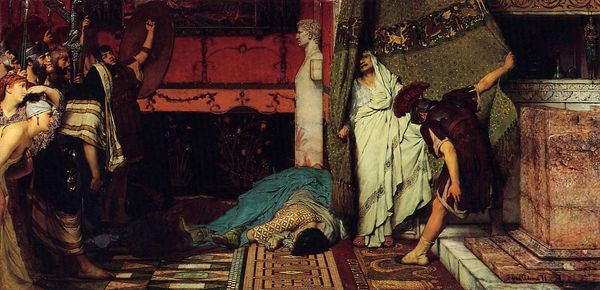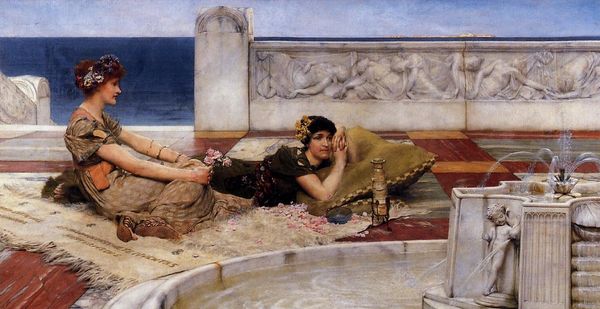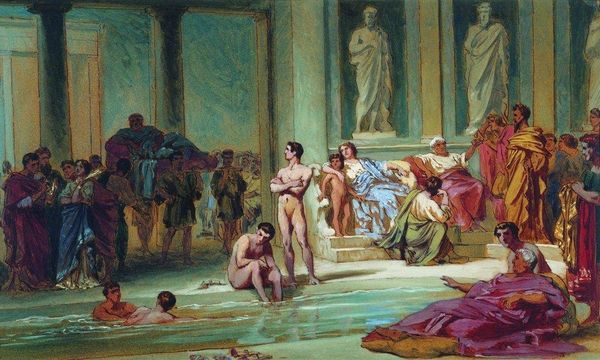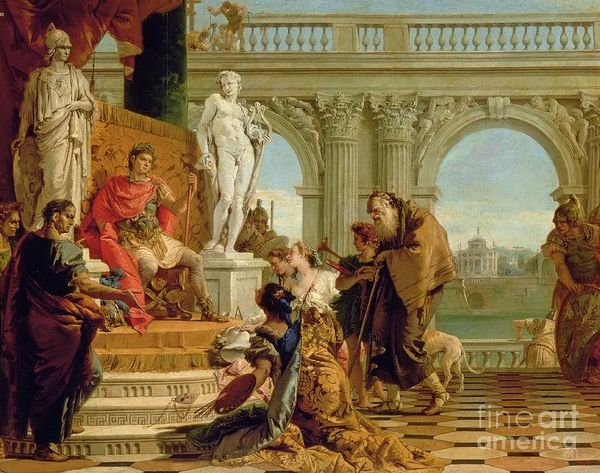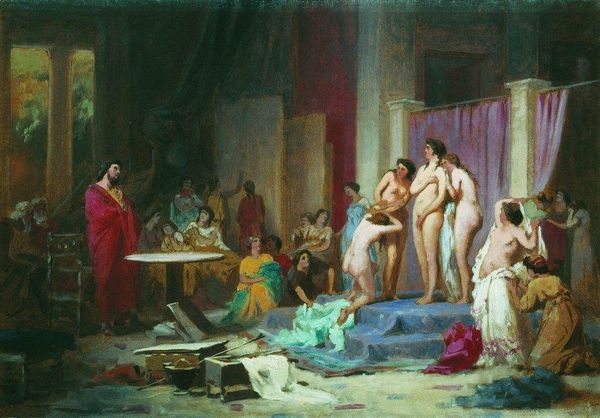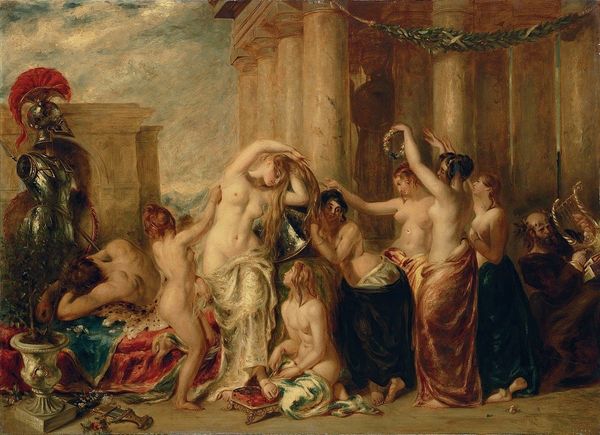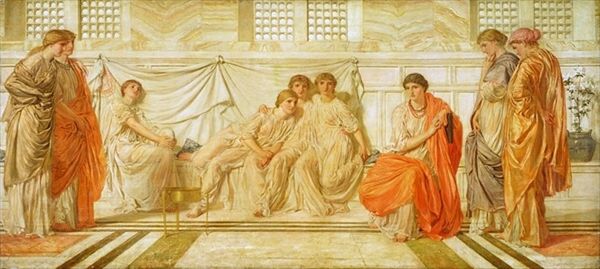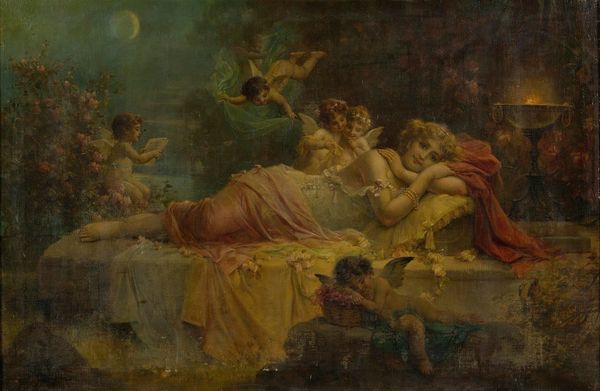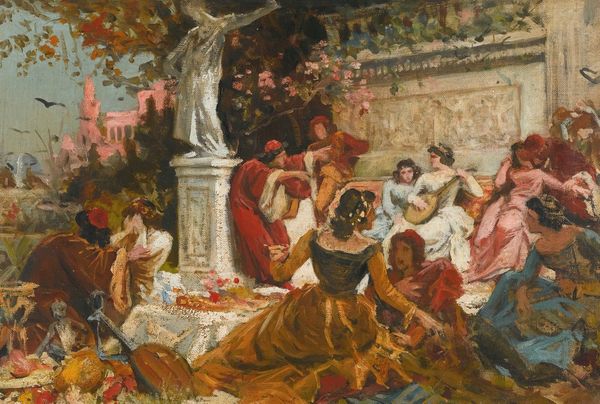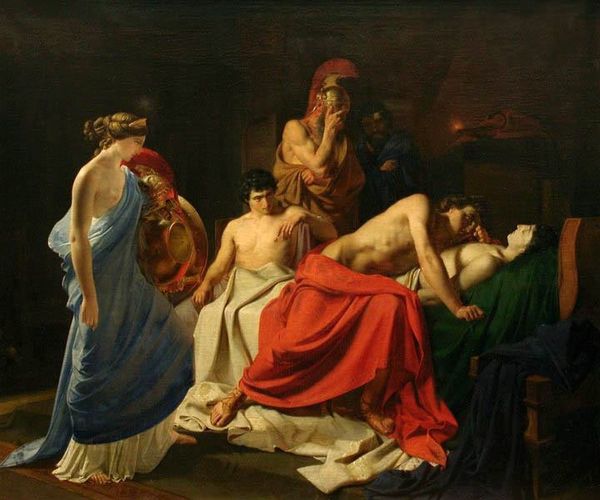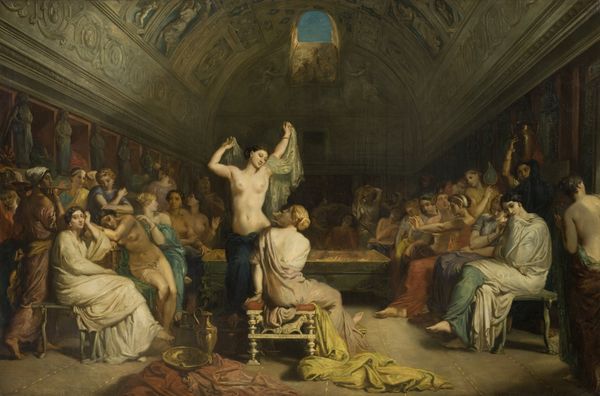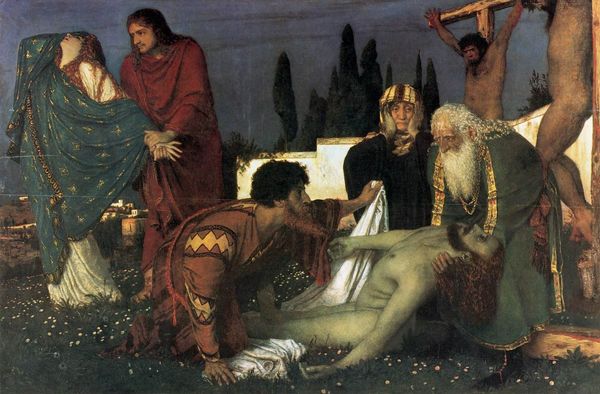
painting, oil-paint
#
portrait
#
gouache
#
neoclacissism
#
allegory
#
narrative-art
#
painting
#
oil-paint
#
greek-and-roman-art
#
landscape
#
figuration
#
famous-people
#
mythology
#
genre-painting
#
history-painting
#
academic-art
#
watercolor
Copyright: Public domain
Editor: Here we have Henryk Siemiradzki’s painting, “Socrates Finds his Student Alcibiades at Heterai”. It’s an oil painting depicting a scene from ancient Greece, a philosopher confronting his student amongst a group of revelers. It strikes me as quite theatrical, almost like a stage play. How do you interpret this work? Curator: Well, the drama is definitely intentional. Siemiradzki situates this scene within a complex social commentary. We see Socrates, representing reason and discipline, juxtaposed against Alcibiades indulging in the pleasures of Athenian high society, surrounded by courtesans. Consider how the artist uses this historical anecdote to critique the moral decadence of his own time, a very common theme in academic art. Editor: So, you're saying it’s less about ancient Greece itself and more about reflecting anxieties of Siemiradzki's contemporary society? Curator: Precisely! It raises questions about the responsibilities of the privileged class, their role in society, and the potential consequences of unchecked indulgence. What does it mean for a society when its leaders, like Alcibiades, prioritize pleasure over virtue and duty? Think about it through a feminist lens too: how are women depicted in this painting? Are they given agency, or are they merely objects of desire within this tableau of male ambition and moral decay? Editor: I see what you mean. It definitely complicates my initial reading. The women almost fade into the background, supporting this hedonistic environment. Curator: It forces us to ask, whose stories are being told and whose are being erased or minimized? The painting then isn't simply a depiction of a historical moment, but an intervention into ongoing cultural and political debates. And importantly, to what extent is this kind of narrative – the wise older man guiding the errant youth – still relevant today? Editor: That’s given me a lot to consider about how art engages with contemporary issues through historical narratives. Curator: And how historical narratives serve very specific cultural agendas. Let’s consider how the Neoclassical style itself participates in those agendas.
Comments
No comments
Be the first to comment and join the conversation on the ultimate creative platform.
